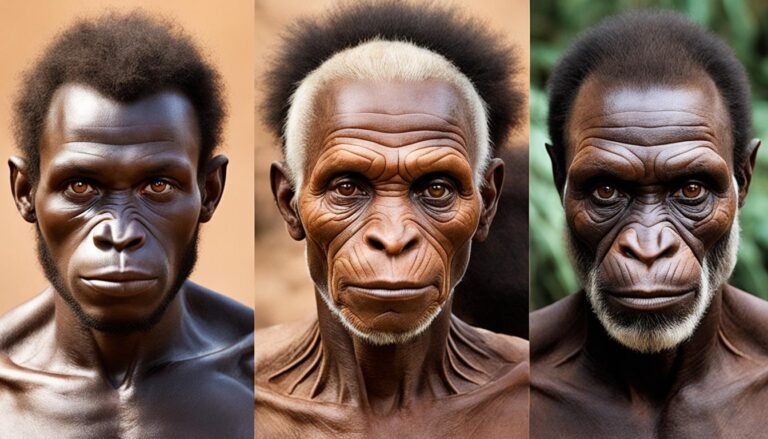What is the correct term for a dark skinned person?
When it comes to referring to someone with a dark complexion, do you ever question what the correct term should be? Does it change over time or vary based on personal preference? In this article, we delve into the world of terminology, exploring the evolution of language and the importance of using culturally sensitive wording when discussing individuals with darker skin.
Key Takeaways:
- The terms “Black,” “African American,” and “person of color” are commonly used to refer to dark-skinned individuals in the United States.
- These terms have evolved over time, reflecting societal changes and the fight for racial equality.
- Respecting individual racial identities and using inclusive language is crucial when discussing dark-skinned individuals.
- Dark skin has evolved through natural selection as a protective response to ultraviolet radiation in sunny regions.
- Understanding the historical and cultural significance of dark skin fosters a greater appreciation of diversity.
The Evolution of Dark Skin
Dark skin is a type of human skin color that contains a high concentration of melanin pigments. It is believed to have evolved around 1.2 million years ago as early hominid species moved from equatorial rainforests to sunnier savannas. The development of dark skin was a result of natural selection in response to the need for better cooling mechanisms in the heat of the savannas.
Dark skin provided protection against folate depletion caused by ultraviolet radiation and helped retain folate reserves and protect DNA. This adaptation was crucial in tropical regions with intense sunlight, where dark-skinned individuals had a significant advantage.
However, in low-sunlight areas, dark-skinned individuals may be at an increased risk of vitamin D deficiency. Despite this, recent studies have shown that dark-skinned individuals may have higher bone density and a lower risk of fractures, suggesting that the thresholds for vitamin D deficiency may differ for different skin types.
Dark-skinned populations are predominantly found near the equator in tropical regions with high ultraviolet radiation levels. This distribution further supports the hypothesis that the evolution of dark skin was driven by the need for protection against ultraviolet radiation.
The Benefits and Challenges of Dark Skin
The evolution of dark skin brought several advantages, including protection against folate depletion and a reduced risk of certain types of skin cancer. However, it also presents challenges in regions with limited sunlight.
Let’s take a closer look at the benefits and challenges associated with dark skin:
| Benefits | Challenges |
|---|---|
| Protection against folate depletion caused by ultraviolet radiation | Higher risk of vitamin D deficiency in low-sunlight areas |
| Lower risk of certain types of skin cancer | Potential difficulties in synthesizing sufficient vitamin D |
| Ability to retain folate reserves and protect DNA | Higher melanin levels may limit the production of vitamin D |
Overall, the evolution of dark skin was a remarkable adaptation to the challenging environments early hominid species faced. It allowed for better protection against the harmful effects of ultraviolet radiation and helped maintain essential nutrients.
Historical and Cultural Significance of Dark Skin
The evolution of terminology for dark-skinned individuals reflects the changing social and cultural landscape. Words and phrases that were once considered acceptable, such as “colored” and “Negro,” are now considered dated and offensive. However, organizations like the NAACP and the United Negro College Fund have retained their names not to perpetuate offense but rather to honor their historical mission of advancing the rights and opportunities of Black people.
Dark skin plays a protective function against skin cancer, particularly melanoma, by utilizing its unique ability to absorb or scatter harmful ultraviolet radiation. This natural defense mechanism is a result of the higher levels of melanin present in dark-skinned individuals. Melanin, the pigment responsible for the dark coloration of the skin, acts as a shield against the damaging effects of UV rays.
Besides its protective function, melanin also possesses antibacterial properties that contribute to lower infection rates in individuals with dark skin. This natural defense mechanism helps to combat harmful bacteria and pathogens, further highlighting the unique properties of melanin-rich skin.
The historical and cultural significance of dark skin is intertwined with the ongoing struggle for racial equality and the celebration of diversity. It serves as a powerful symbol of resilience, strength, and identity within communities of color.

Protective Function of Dark Skin Against Skin Cancer
| Type of Skin | Risk of Skin Cancer |
|---|---|
| Dark Skin | Lower risk due to increased melanin absorption and scattering of UV radiation |
| Light Skin | Higher risk due to reduced melanin and increased susceptibility to UV radiation damage |
Antibacterial Properties of Melanin
- Dark skin has been shown to have naturally higher levels of antibacterial agents, helping to reduce infection rates.
- Melanin inhibits the growth and proliferation of various bacteria and pathogens.
Conclusion
In conclusion, when referring to a dark-skinned person, it is important to utilize culturally sensitive terminology that respects racial identity and promotes inclusive language. In the United States, terms such as “Black,” “African American,” and “person of color” are widely accepted and used. However, it is crucial to recognize that individual preferences may vary, and the choice of language should align with an individual’s personal identification and level of investment in their racial identity.
By acknowledging the historical and cultural significance of dark skin, we can foster a greater understanding and appreciation of diversity. This includes recognizing the terminology evolution and the efforts made by organizations like the NAACP and the United Negro College Fund to advance the rights and opportunities of Black people while maintaining their historical names. Additionally, understanding the protective function of dark skin against skin cancer and the antibacterial properties of melanin highlights the biological significance of this variation in skin color.
As society becomes more aware of the importance of inclusive language and acknowledging diversity, it is crucial to use words and phrases that are respectful and considerate. By practicing culturally sensitive terminology and embracing inclusive language, we can create a more inclusive society that celebrates and values the rich diversity of racial identities.






